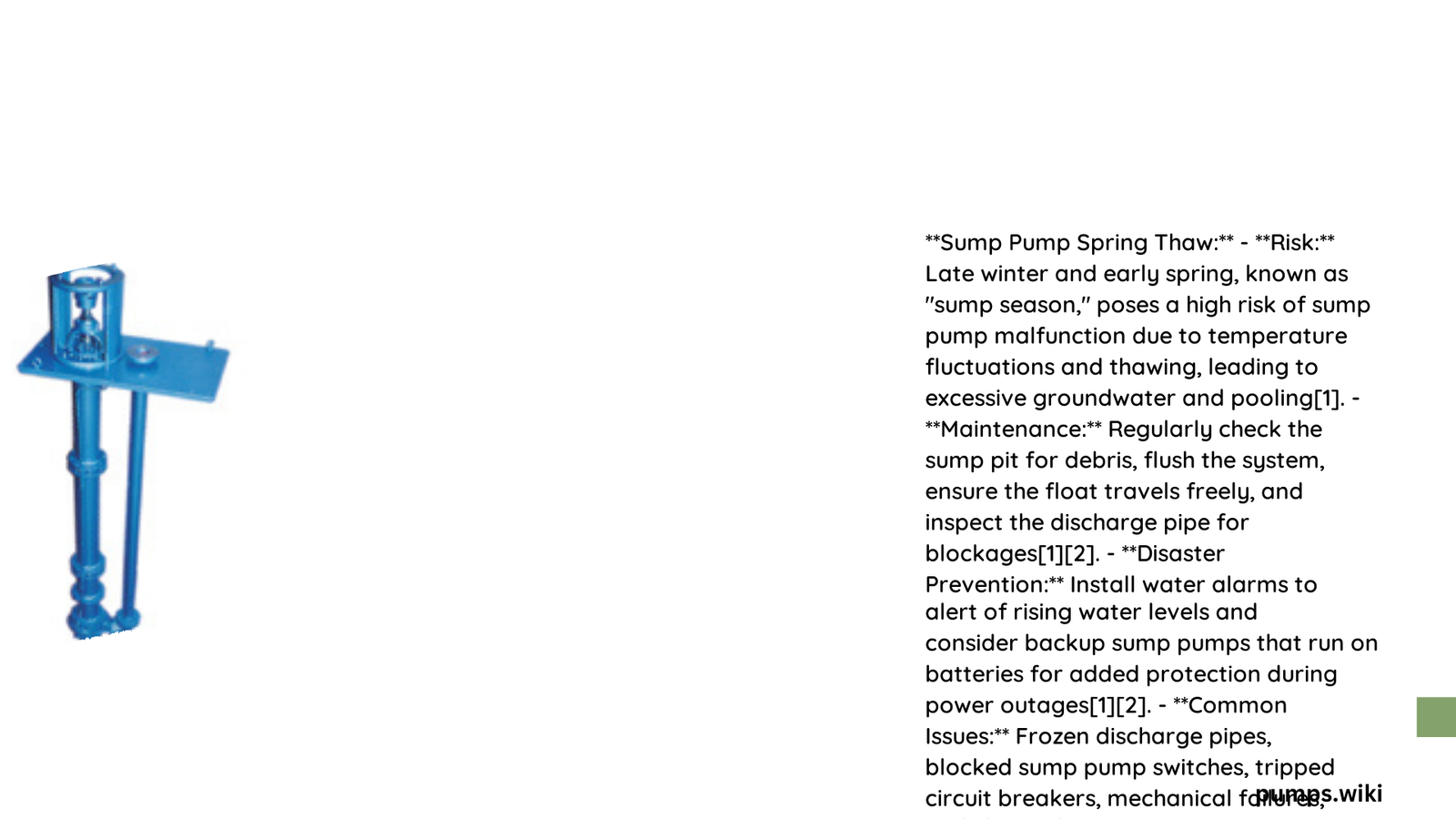As winter’s snow begins to melt and groundwater levels rise, homeowners face significant risks of basement flooding during the spring thaw. A well-maintained sump pump becomes your first line of defense against potential water damage, ensuring your basement remains dry and protected from moisture infiltration and structural complications.
What Happens During Spring Thaw?
Spring thaw represents a critical period when accumulated snow and ice rapidly melt, creating substantial water volume around residential foundations. This sudden water influx can overwhelm unprepared drainage systems, potentially causing basement flooding and significant property damage.
Key Water Volume Challenges
| Snow Depth | Potential Water Volume | Risk Level |
|---|---|---|
| 6 inches | 2,500-3,500 gallons | Moderate |
| 12 inches | 5,000-7,000 gallons | High |
| 18 inches | 8,500-10,000 gallons | Critical |
Why Does Sump Pump Preparation Matter?

Proper sump pump preparation during spring thaw is crucial because:
- Prevents basement water damage
- Protects home’s structural integrity
- Reduces potential mold and mildew growth
- Preserves property value
- Minimizes expensive repair costs
How to Assess Sump Pump Readiness?
Comprehensive Pre-Thaw Inspection Checklist
- Pit Cleanliness
- Remove debris and sediment
- Check for potential blockages
-
Ensure smooth water flow
-
Pump Functionality
- Test pump operation
- Verify float switch movement
- Check electrical connections
-
Simulate water level rise
-
Discharge Line Evaluation
- Inspect for cracks or damage
- Ensure proper slope away from foundation
- Clear potential obstructions
- Verify minimum 10-foot discharge distance
What Are Common Spring Thaw Challenges?
Homeowners frequently encounter several challenges during spring thaw:
- Rapid groundwater level increases
- Saturated soil conditions
- Potential sump pump system overload
- Unexpected power interruptions
- Drainage system limitations
How to Enhance Sump Pump Performance?
Recommended Upgrades
- Install battery backup systems
- Consider water-powered secondary pumps
- Implement high-water alarms
- Upgrade to higher capacity pumps
- Improve foundation drainage
When Should Professional Help Be Considered?
Professional intervention becomes necessary when:
- Sump pump is over 7 years old
- Persistent moisture issues exist
- Complex drainage challenges are present
- Multiple system failures occur
- Significant foundation modifications needed
Cost Considerations
Sump Pump Investment Breakdown
| Service Type | Estimated Cost Range |
|---|---|
| Basic Maintenance | $100 – $300 |
| Pump Replacement | $500 – $1,500 |
| Advanced System Upgrade | $1,500 – $3,500 |
Pro Tips for Long-Term Protection
- Maintain consistent maintenance schedule
- Monitor groundwater levels
- Invest in quality equipment
- Consider professional annual inspections
- Implement preventative drainage strategies
Conclusion
Successful sump pump management during spring thaw requires proactive planning, regular maintenance, and strategic investments. By understanding potential challenges and implementing comprehensive protection strategies, homeowners can effectively safeguard their properties against water damage.
